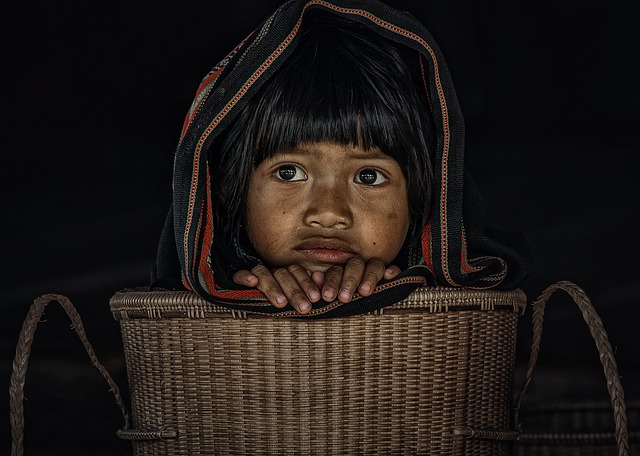Collaborative Community Efforts: Safeguarding Children through Prevention

Building a robust network among schools, healthcare providers, non-profits, and local authorities is…….
Understanding Child Safety and Protection
Child Safety and Protection encompasses a broad range of practices, policies, and laws designed to ensure the well-being, health, and security of children around the globe. It involves the safeguarding of children from various forms of harm, including physical abuse, emotional neglect, sexual exploitation, and other risks that could compromise their safety or development. The core components of child safety and protection include prevention strategies, intervention measures, education and awareness-raising, and the establishment of a supportive environment for children.
The historical context of child safety and protection is rooted in societal norms and legal frameworks that have evolved over time to address issues of child welfare. The 19th and early 20th centuries saw significant changes with the passage of laws such as the British Factory Act of 1833, which restricted child labor, and the establishment of the International Save the Children Union in 1919. These historical milestones marked a shift towards recognizing children’s rights and the need to protect them from exploitation and harm.
Global Impact and Trends
Child Safety and Protection is a global concern, with its impact and trends shaped by cultural, socio-economic, and political factors. The United Nations Convention on the Rights of the Child (UNCRC), ratified by all but a few countries, has set international standards for the protection and welfare of children. Global trends indicate a growing awareness and commitment to child safety, with more countries integrating these principles into their legal systems and public policies.
Regions vary in their approach to child safety and protection, influenced by factors such as economic status, cultural values, and historical contexts. For instance, developed nations tend to focus on prevention and education, while developing countries often prioritize the eradication of immediate threats such as child labor, trafficking, and exploitation.
Economic Considerations
The economics of child safety and protection involve both investment in preventive measures and the economic benefits derived from safeguarding children’s well-being. Market dynamics play a role in the demand for products and services that promote child safety, such as car seats, childproofing devices, and educational programs. Investment patterns are influenced by public and private sectors, with funding directed towards research, prevention programs, and support services.
Child Safety and Protection is integral to economic systems as it contributes to the development of a healthy, educated, and productive future workforce. It also aligns with broader goals of sustainable development and social well-being.
Technological Advancements
Technology has significantly impacted child safety and protection through innovative solutions that range from apps for reporting abuse to advanced surveillance systems in schools and childcare facilities. The internet and digital platforms have been both beneficial and problematic, offering resources and education while also posing risks such as cyberbullying and online exploitation.
Future potential includes the development of AI-driven tools for early detection of abusive behavior patterns, virtual reality (VR) simulations for training professionals in child welfare, and blockchain technology to securely share information between agencies and authorities.
Policy and Regulation
The policy and regulatory landscape for child safety and protection is complex, with a patchwork of international, national, and local laws and guidelines. Key policies include the aforementioned UNCRC, as well as specific legislation such as the U.S. Children’s Bureau, the UK’s Children Act 1989, and the Australian Child Safe Standards. These frameworks establish the legal obligations of caregivers and service providers to ensure child safety and protection.
Regulations are subject to ongoing review and revision to address emerging challenges and improve outcomes for children. The effectiveness of these policies is often measured by their ability to prevent harm, respond to incidents effectively, and ensure the rights and well-being of children are upheld.
Challenges and Criticisms
Child Safety and Protection face numerous challenges, including inadequate funding, lack of coordination among agencies, insufficient training for professionals, and resistance to policy changes due to cultural or economic factors. Additionally, there is a significant challenge in addressing the digital divide, ensuring that all children have access to online safety resources.
Criticisms often highlight systemic issues such as racial disparities in child welfare systems and the overrepresentation of certain groups in reports of abuse or neglect. Solutions to these challenges involve interdisciplinary collaboration, increased funding, targeted training programs, and the development of culturally sensitive practices.
Case Studies
Several case studies illustrate the successful application of child safety and protection measures:
The Innocents Project: An organization that works to exonerate wrongfully convicted children in the U.S. Through its efforts, it has highlighted the importance of proper legal representation for children and the need for reform in juvenile justice systems.
Save the Children’s “Ending Child Marriages” Initiative: This initiative aims to protect girls from child marriage through advocacy, community engagement, and support services. It has led to policy changes and greater awareness of the issue.
UNICEF’s ‘Child Protection’ Programs: UNICEF’s programs focus on protecting children from violence, exploitation, and other harmful practices. Their work in countries like Bangladesh and Ethiopia has significantly reduced child marriage rates and improved birth registration processes.
Future Prospects
The future of Child Safety and Protection is likely to be characterized by an even greater emphasis on integration across sectors, leveraging technology for innovation, and adapting to the changing landscape of threats to children’s well-being. The role of data analytics in predicting and preventing harm, the expansion of interventions into areas such as mental health, and the incorporation of child safety principles into mainstream products and services are all areas ripe for growth.
Conclusion
Child Safety and Protection is a multifaceted issue that requires a comprehensive approach, encompassing legal frameworks, economic investment, technological innovation, and cross-sector collaboration. As the world evolves, so too must our strategies to ensure the safety and protection of children everywhere. The commitment to this cause reflects our collective responsibility to nurture and safeguard the most vulnerable members of society.

Building a robust network among schools, healthcare providers, non-profits, and local authorities is…….

Domestic violence profoundly affects children, whether as witnesses or victims. Recognizing behavior…….

Child safety is a complex issue that requires a multi-faceted approach addressing physical, emotiona…….

Child abuse prevention involves a multi-faceted approach focusing on early identification of red fla…….

Teaching children about safe online behavior is crucial, focusing on risks like cyberbullying, inapp…….

In the digital age, family safety plans are essential to protect children from online risks like cyb…….

Domestic violence has severe, lasting effects on children, leading to mental health issues, behavior…….